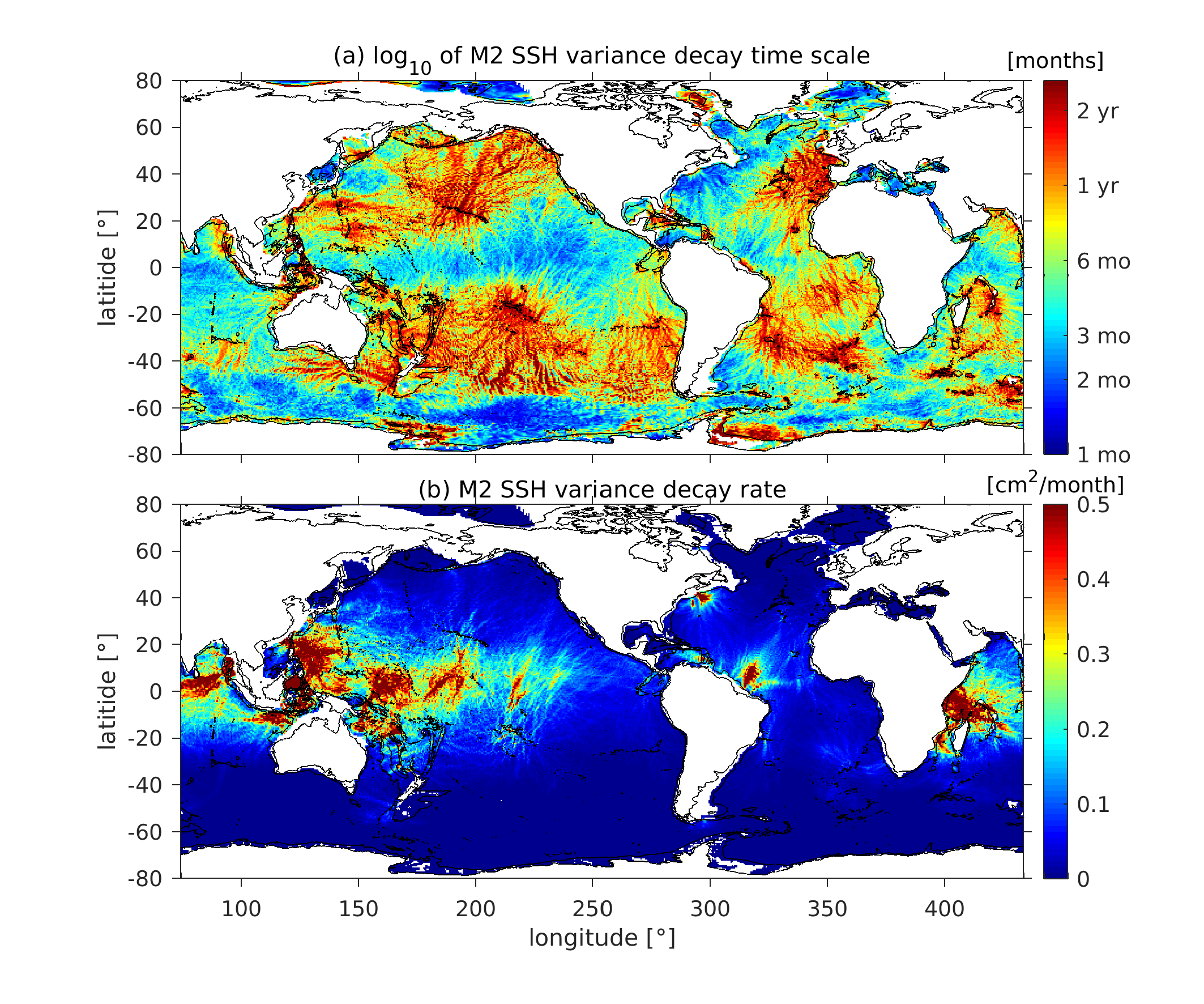Abstract's details
The non-stationarity scattering rate: a new metric to study non-stationary internal tides
Event: 2018 Ocean Surface Topography Science Team Meeting
Session: Tides, internal tides and high-frequency processes
Presentation type: Oral
Due to the time-variable background flow and stratification, internal tides become non-stationary as they propagate away from their source regions in the global ocean. The degree of non-stationarity is determined by the strength of the time variability of the background fields, which is the strongest in the western boundary currents and the equatorial jets. A commonly used metric to identify where and by how much internal tides are non-stationary is the non-stationarity or incoherence fraction, i.e., the non-stationary internal tide variance normalized by the total internal tide variance. The fraction is not only large in regions with a strong time variability of the background fields, like the equatorial jets, but also in regions where the internal tides are very small, like the ACC. Hence, the fraction does not tell us if major internal tides are affected by the non-stationarity scattering. To overcome this issue, we introduce the non-stationarity scattering rate, which is the total, semidiurnal or diurnal, internal tide variance normalized by the stationary variance decay time scale. This rate is the speed at which energy is transferred from the stationary to the non-stationary internal tide. We analyze one-year-long sea-surface height (SSH) time series from realistically forced global HYbrid Coordinate Ocean (HYCOM) simulations at 8 and 4 km horizontal resolution. We compute the annual-mean M2 and K1 stationary internal-tide SSH variance for time-series durations of two weeks and 1, 2, 3, 4, 6, 9, and 12 months using a least-squares harmonic fit. The stationary variance is inversely proportional to the time series duration. From this relation we can then estimate a variance decay time scale and a scattering rate. The non-stationarity scattering rates are the largest in areas where internal tide beams intersect the western boundary currents and the equatorial jets (see figure). The figure shows the M2 (a) SSH variance decay time scales and (b) scattering rates for the 8 km simulations. The M2 internal tides are found to be about 10% more non-stationary and feature larger scattering rates than the K1 internal tides. We also study the effect of the model’s horizontal resolution on the semidiurnal and diurnal decay time-scales and scattering rates.


Contribution: TID_01_Buijsman.pdf (pdf, 2918 ko)
Back to the list of abstract